It’s not hard to guess what Time Doctor does best by reading the name.
In the productivity space, it’s the employee time tracking software you want to have around if you’re serious about saving thousands of dollars a year in lost time.
Unlike other time tracking tools, Time Doctor is known for being highly customizable and can easily work for both remote and in-house teams (or a hybrid of both).
Below, we dive deep into the specifics of what sets Time Doctor apart, the pros and cons of onboarding the tool, and what pricing options you have if you decide to use it.
Let’s take a closer look.
Time Doctor Pros and Cons
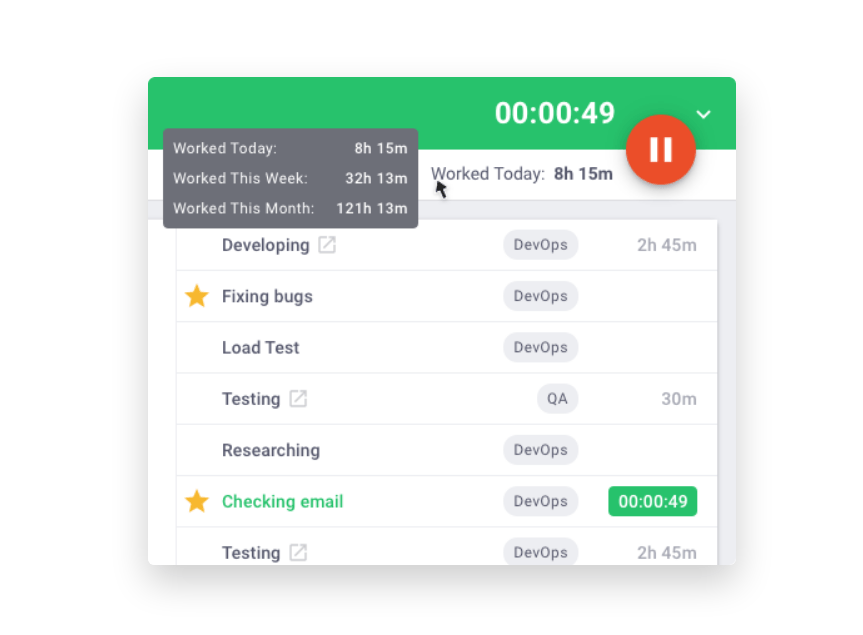
Pros
- Comes with an app
- Has option for automated time tracking
- Offers client login access through its Premium plan
- You can track tasks and activities in real time
- Offers data storage and screenshot features
- Highly adaptable to any business
- Available for Window, Mac, or Linux operating systems
- Integrates with a number of popular business and payroll software
Cons
- Can get expensive the more users you need to add
- Minor usage glitches reported by users
- Its manual setting can be inaccurate if you forget to set them correctly
- User interface isn’t as modern as it could be
Time Doctor Features
Knowing the pros and cons can be a quick way of assessing just how useful Time Doctor can be for you. However, diving into the specific features is where you’ll find out whether it’ll fit your existing workflow and productivity needs.
Time Tracking and Employee Monitoring
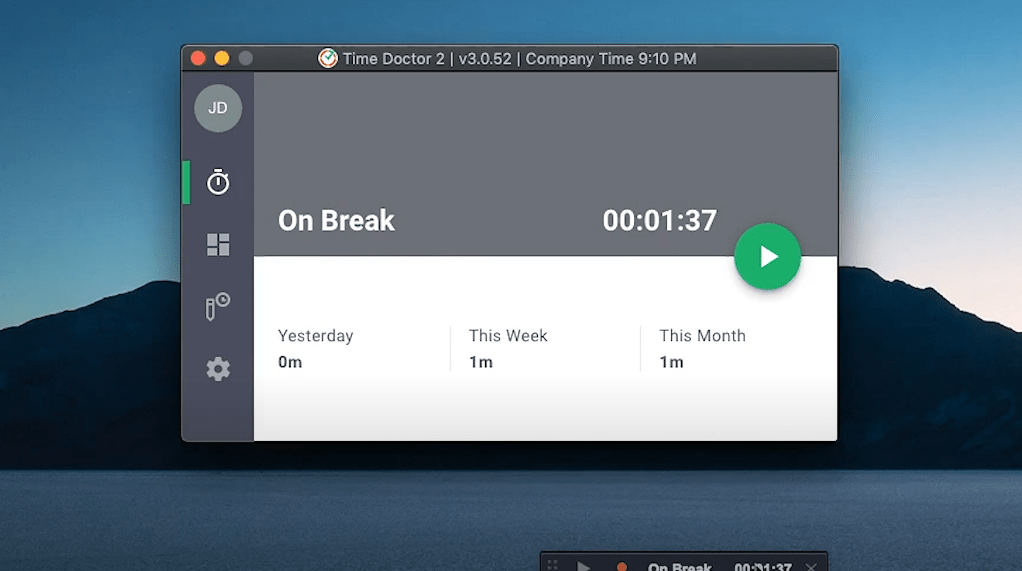
Once you download the app, you have access to a timer dashboard where you can configure your activity bar and choose whether you want Time Doctor to start auto-tracking your computer usage. This is an ultra-useful feature for employee monitoring—it can let you know how long projects are taking and what tasks are the most time-consuming.
However, keep in mind that it does come with the option to manually alter time if needed. And if you want specific time tracked for specific tasks you’ll have to manually toggle the tracker on and off. This might get a little tedious for employees if they’re constantly taking breaks or logging on or off their computers multiple times during the day. Still, it’s good to know that Time Doctor comes with both an automatic and manual time tracking option.
Once time is tracked, both employees and managers can easily access tracked data. The best part is that Time Doctor can be used to track activity on any device, not just your computer.
Time Doctor can work great for small agencies and service-based startups. However, if you’re managing 20 or more employees, its onboarding team will help you get up and running.
Distraction Alerts
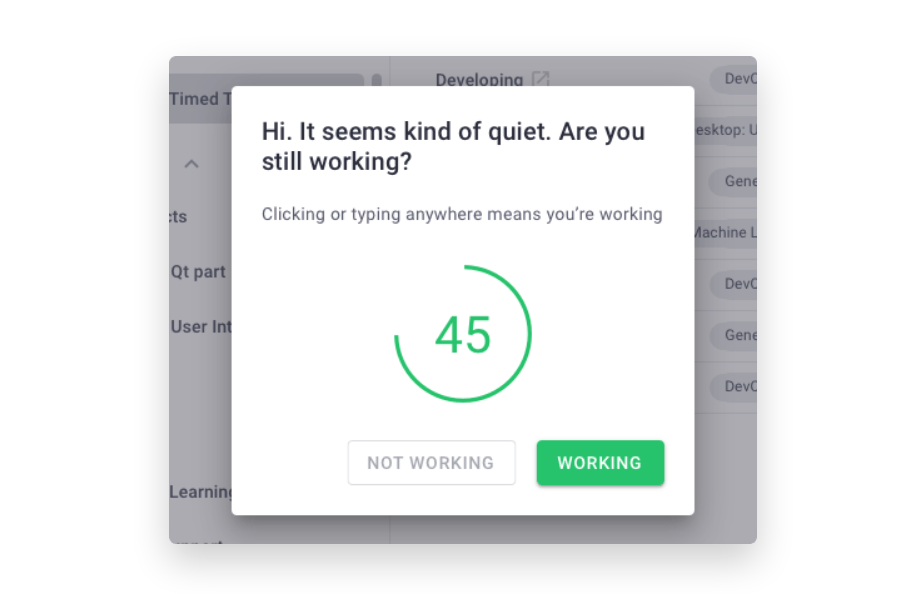
Distraction alerts can either be an extra feature you don’t need or a valuable way to help keep your employees on track. The usefulness of Time Doctor’s distraction alert feature comes down to individual work preferences.
If Time Doctor detects a user is spending too much time on sites and tasks that aren’t work-related—like social media or YouTube—a popup alerts the user they’re going off track. The distraction alert feature also comes in handy if it detects a user’s device has been sitting idle for too long during designated work hours.
Depending on how you want to monitor employee work, Time Doctor’s alert feature can help your employees stay productive during designated hours. However, it proves to be less useful if employees are free to choose when they work and at what intervals.
Online Timesheets and Payroll
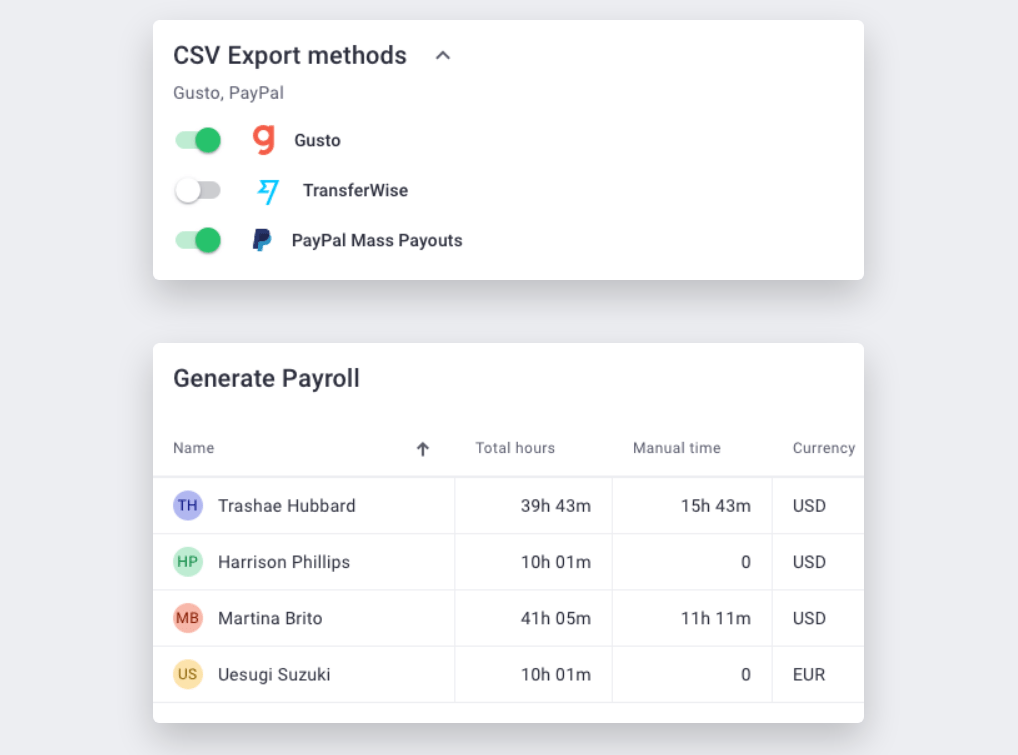
Time Doctor’s timesheets and payroll calculations are designed so that they can easily be reviewed and approved by management regardless of whether you’re paying employees a salary or by the hour. Not only that, its payroll process is highly customizable and comes with quite a number of integrations that include Payoneer, TransferWise, Asana, and even Basecamp.
So, if you want to manage your payroll process with a payroll tool like Gusto, Time Doctor seamlessly integrates into your Gusto workflow to help you easily keep track of all your payroll costs and automate payouts.
A particular Time Doctor payroll perk that stands out is its ability to calculate payouts in more than one currency. Once you’re finished reviewing your payroll data, you can take advantage of Time Doctor’s bulk billing and payout features.
If you ever need to know what time was spent on what specific sites as you review and approve payroll, you can effortlessly pull up Time Doctor’s web and app history reports for each employee or project. History reports can be valuable since, according to Time Doctor, productivity can go up as much as 22% once employees are aware their work hours are being tracked and monitored.
Productivity Summary Reports
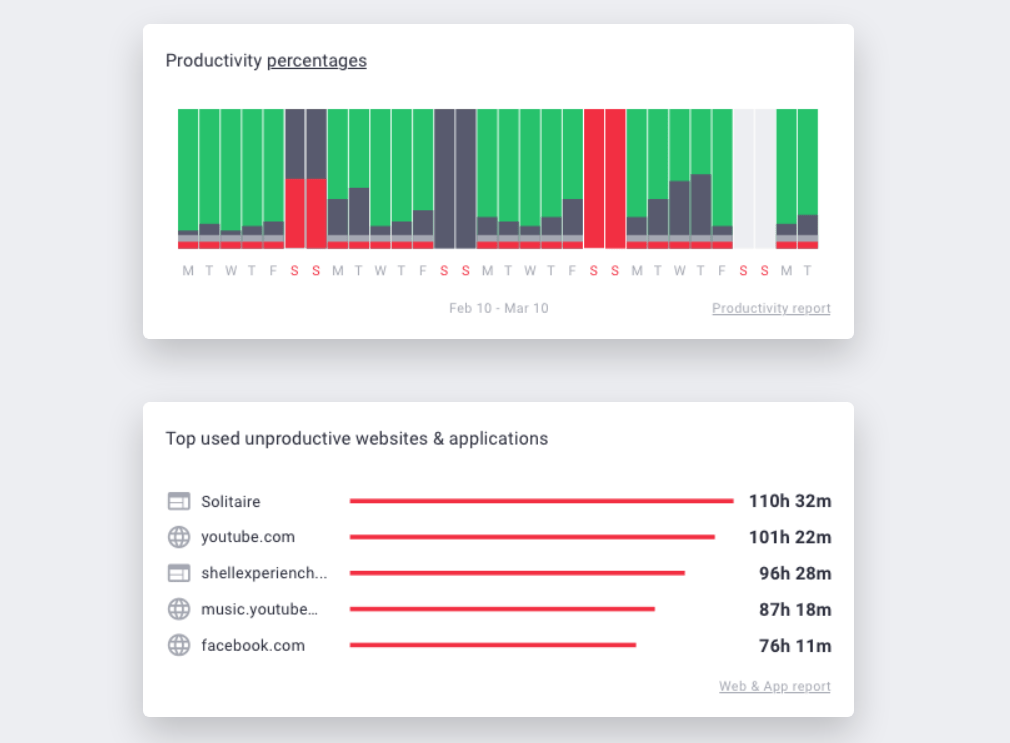
It’s one thing to track time spent on a project. But it’s another to figure out just how productive employees are. One way Time Doctor sets out to do that is by showing you real-time data on what projects are currently being worked on.
Time Doctor also shows you weekly and daily reports broken down by website and application usage, hours worked, or client work. This information is accessible to both managers and employees, which adds a layer of transparency as far as productivity and project management.
This feature can be useful in more ways than one. It’s easy to see how it can make communication easier as both employees and managers know what’s being worked on and the time span each project will take. Daily reports can also be useful on the client side, as they’ll know how much their project is actually costing them once you share tracked project information.
Project Management and Budgeting
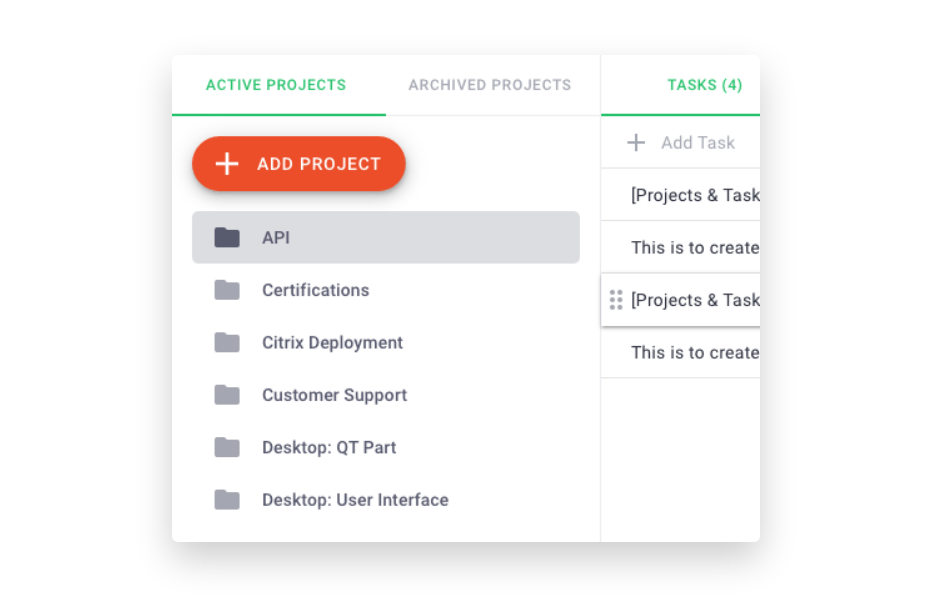
One of the biggest reasons to track the number of hours any given project or task may take is to be better equipped to accurately manage budgets and future projects. To help with this, Time Doctor makes sure that projects and tasks can only be set by a designated admin.
Users can add less important tasks too and toggle their tracked time on or off as they see fit. Features like these are what make project management easier as you accurately track project hours, tasks, and expenses incurred. All this data is stored too, depending on the plan you pay for, so you can always refer back to it for old and new projects.
Offline Time Tracking
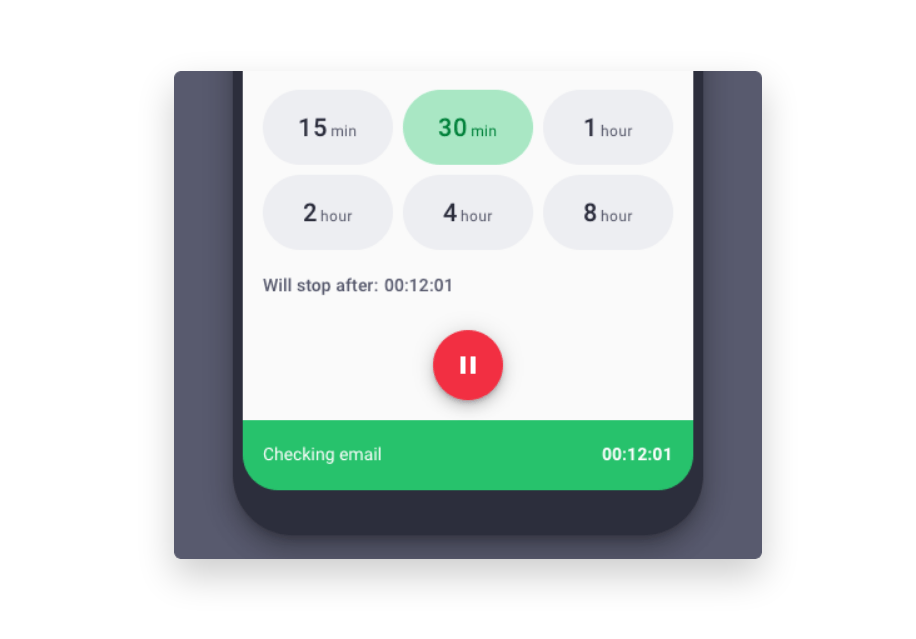
Yet another useful Time Doctor feature? Offline tracking. It’s a valuable tool that isn’t always offered by other time tracking systems. But how does it work exactly?
It’s simple. Whether you’re working offline or online, or you happen to accidentally work offline, your downloaded Time Doctor dashboard will still track your tasks and progress. Once you get back online, Time Doctor’s app will sync your offline data with the rest of your report.
As far as offline tracking goes, there really isn’t much of a downside to this feature. Offline tracking can come in handy in making sure you’re tracking every single hour whether there’s an outage, your employees accidentally work offline, or troublesome situations lead to offline work.
Time Doctor Pricing and Package Options
One of the best ways to truly get a feel for what it’s like to use Time Doctoris by taking advantage of its 14-day free trial. You get to try a plan of your choice free for two weeks and you can cancel any time without being tied down by any contracts or tricky terms of use.
If you’re considering its use, here’s how its prices breakdown:
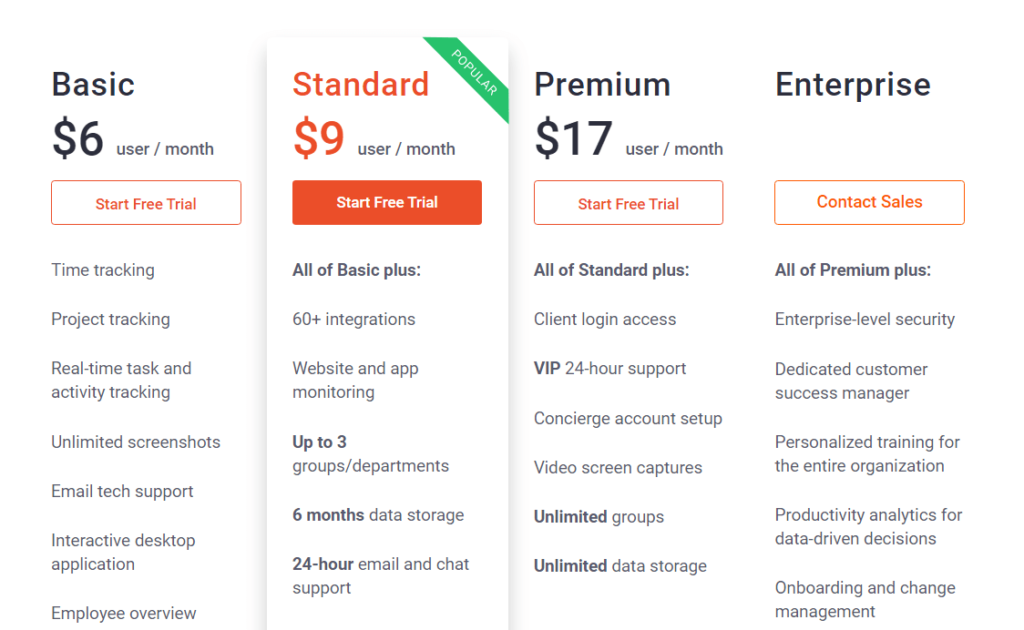
- Basic – $6 per user per month
- Standard – $9 per user per month
- Premium – $17 per user per month
- Enterprise – Contact sales
Enterprise-grade operations can take advantage of TimeDoctor’s Enterprise solution plan since it comes with enterprise-level security, dedicated customer support, and even personalized training for the entirety of your organization.
However, smaller teams and young startups can start using Time Doctor for as little as $6 per user per month through its Basic plan. You’ll be able to track individual projects, create unlimited screenshots, and get access to email tech support when you run into trouble.
If you need more than what its Basic plan offers but are nowhere near needing enterprise-level tools, its most popular Standard plan at $9 a user a month comes with over 60 useful integrations, 6 months of data storage, and around the clock support.
As far as pricing goes, keep in mind that with Time Doctor you are paying per user. If you’re a young business, this can quickly suck up resources—especially if you’re working with a tight budget. At the end of this guide, we go through a few budget-conscious suggestions you can look through if you’re thinking about alternatives that offer similar features.
Time Doctor Reputation
Time Doctor has a reputation for offering reliable support when you need it. Besides how useful it is, users are generally satisfied with its ease of use and accessibility. Some go on to call it the best tracker they’ve ever used.
Unlike other time tracking tools with a widespread reputation for being troublesome, Time Doctor is continually reviewed and regarded as a solid and straightforward time tracking tool that can come in handy for managing large teams and projects.
However, there are areas that Time Doctor seems to fall short. Some users don’t like the fact that while you can track hours per project, you can’t budget amounts of time per project, which could be helpful for setting time estimates and project expectations.
If you’re trying to share reports with clients, you aren’t allowed to add your own business branding.
You’re also limited on how and when you can set task alerts if users are veering off task. This can be annoying, depending on how much control you want over customizing such features.
Cost-Effective Time Doctor Alternatives
If you want a solid time tracking system that takes care of the basics then Time Doctor can be the way to go. However, as mentioned earlier, Time Doctor can get pricey the more advanced tools you need and the bigger your team gets.
For that reason, we’ve listed some alternatives you can look into, albeit some with a more limited array of features. For instance, ClickUp offers a Time Tracking feature on its Free Forever plan. Though limited in all it can do, it can be useful for solopreneurs and small teams that need basic time-tracking tools on a budget.
Harvest, a time tracking tool that offers a 30-day free trial, comes with more straightforward pricing. You can manage two projects per one seat on its free plan. Or you can try its $12 per seat per month plan to get access to all its time tracking tools. Here’s what you get for its paid plan.
For an ultra-affordable time tracking tool, you should check out Jibble. It offers tools like selfie clock-ins, GPS and timesheet reporting, both mobile and desktop apps, and the ability to track work in offline mode. However, it becomes even more impressive once you look into its pricing plans.
You can start using Jibble and have access to solid time tracking tools without paying a penny. Its free plan is free for unlimited users and it stores up to two months of historical data. Its highest Ultimate plan offers a slew of time tracking features that include activity tracking and overtime calculations. All at a super affordable $3 per user per month rate.
While Time Doctor is a solid time tracker, if you can’t swing the cost, especially as your team gets bigger, it’s possible that there are better and more affordable options out there.
It’s a matter of testing a handful of tools and taking advantage of any free trials to truly get a feel for what tool can help you reach your project management goals.

